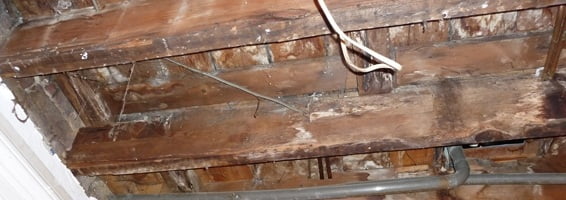New website gives homeowners insight into rot issues

Home owners can get the inside track on property issues, including timber preservation, with a new website from national trade body the Property Care Association.
Offering insight into the causes and effects of wet and dry rot, the guidance at www.property-care.org/homeowners/timber-treatment comes at a key time in the year, as reported cases can increase after winter, mainly due to increased rainfall.
According to the Property Care Association (PCA) undertaking property maintenance tasks and drying out affected areas is often all that is needed to put the problem right – but action needs to be taken quickly to limit damage.
Steve Hodgson, Chief Executive of the PCA, said: “Dry rot and wet rot can affect buildings of all ages and if decay is discovered it should be identified and remedial action taken without delay.
“Once the existence and extent of a timber problem has been established, the main priority must be to focus on its cause. In cases of wet and dry rot, the source of the problem is excess moisture.
“Damaged roof tiles, blocked gutters, cracked water pipes and poor ventilation can all create excess moisture and basic property maintenance is often all that is needed to dry out the affected timber.
“Wet rot is caused by wood being in contact with damp masonry. Exposure to high levels of water over long periods leads to a natural breakdown process, seen in all natural organic materials.
“Commonly seen on untreated wood exposed to the elements, such as window frames, wet rot will not spread beyond the area of dampness.
“Dry rot however can be more challenging. People are often surprised to find that, despite its name, a moisture content in excess of 20 per cent is needed before dry rot fungus develops.
“Filaments are capable of spreading some considerable distance, over and through masonry, to affect timber away from its original source. However, they can only do this if the masonry or covering plasterwork is damp.
“Therefore reducing the moisture content of timber – and surrounding masonry – is vital to treat dry rot.
“Once timber has been dried out, a reassessment should then be made to determine whether the problem has been eradicated and whether the structural qualities of the wood have been affected
“In some cases drying out may be all that is needed, with no treatment necessary. However, where further attention is needed, it should be highly targeted and specific to the affected area only.
“If householders think they may have a problem, it is important that the two types of decay are correctly distinguished since they require different treatment. If in doubt, contact a member of the PCA, to get the problem accurately diagnosed.”
The PCA is a member of TrustMark, the scheme supported by government to help property owners find reliable and trustworthy tradespeople to make home improvements.
To find out more about the PCA, log on to www.property-care.org
ENDS
Notes To Editors
Noted for its training and technical expertise, the PCA incorporates the British Wood Preserving and Damp-proofing Association (BWPDA), and has been in formation for more than 85 years.
The trade body represents the UK’s structural repair sector, as well as the structural waterproofing, wood preservation, damp-proofing, flood protection and invasive weed control industries.
www.property-care.org
Press release issued by Jane Shepherd of Shepherd PR Limited, 01538 308685, mobile 07985 129315.